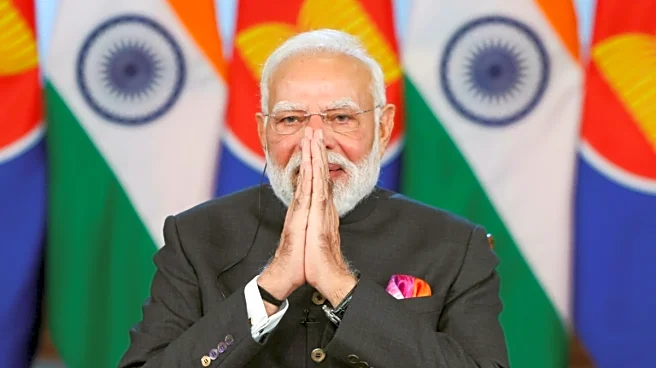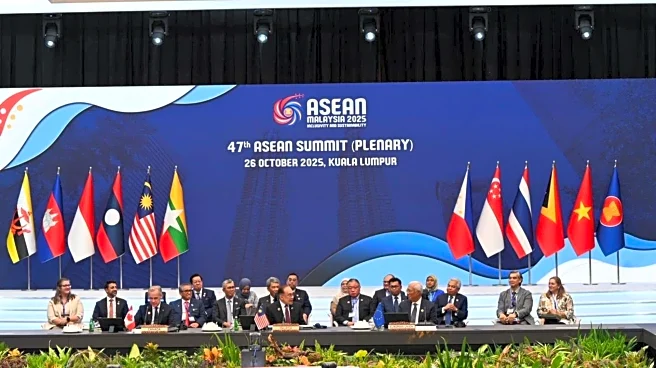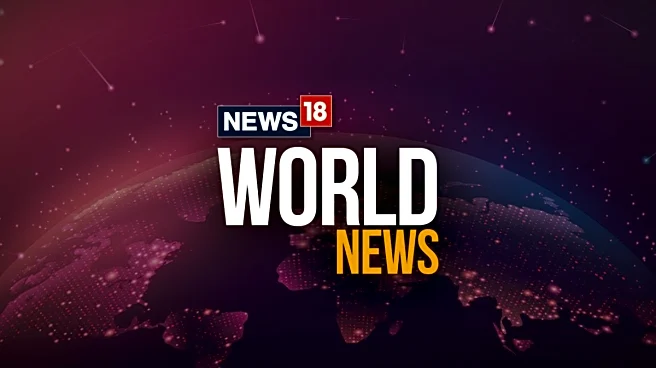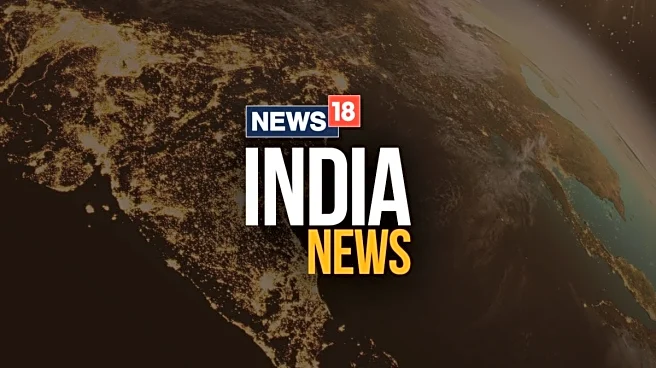Over the past decade, India’s engagement with Southeast Asia has transformed. In 2014, Prime Minister Narendra Modi launched the Act East Policy. It was a comprehensive upgrade to the passive Look East framework.
Now, it has matured into a results-driven strategic partnership delivering concrete economic, defence, and digital dividends.
Bilateral trade with ASEAN has surpassed $123 billion. Defence exports now include India’s BrahMos missiles to the Philippines, and the integration of India’s UPI with Singapore’s PayNow system. And in 2022, India and ASEAN elevated their relationship to a Comprehensive Strategic Partnership, the diplomatic equivalent of going steady after 30 years of courtship.
But as this partnership matures, both sides confront a harder question: Can ASEAN move from strategic partner to economic driver for India’s ambitions?
Elevating the Relationship
The architecture of India-ASEAN engagement has expanded dramatically since Modi took office in 2014. India now participates in virtually every ASEAN-led mechanism, the Regional Forum, Post Ministerial Conference, East Asia Summit, and crucially, the ASEAN Defence Ministers’ Meeting Plus. Officials established a separate diplomatic mission to ASEAN in Jakarta in 2015.
Even though Modi couldn’t travel to Malaysia for the summit, he addressed the gathering of nations virtually and underlined the importance of this partnership to the rest of the world. He declared that “the 21st century is our century, the century of India and ASEAN”. And to match that commitment, 2026 has been designated as the “ASEAN-India Year of Maritime Cooperation,” approved plans for a second maritime exercise, and pushed for completing the long-stalled review of their free trade agreement by year-end.
Malaysian Prime Minister Anwar Ibrahim called the relationship “a force for stability and mutual prosperity”. And while diplomatic gatherings and summits like these ooze out platitudes by the dozen, the language matters. In a region increasingly squeezed between American and Chinese influence, India offers ASEAN nations something valuable: a major power partnership without the baggage of military alliances or political conditionality.
India has consistently backed ASEAN centrality and its Indo-Pacific outlook, aligning its own initiatives with the region’s vision for a rules-based order. It gives ASEAN members room to manoeuvre, and to deepen security ties with India, whilst maintaining economic links with China and strategic relationships with the United States.
Defence Gets Serious
For years, India-ASEAN defence cooperation meant little more than joint statements and officer exchanges. That changed with the BrahMos deal.
In January 2022, the Philippines signed a USD 375 million contract for three coastal defence batteries equipped with BrahMos supersonic cruise missiles. India delivered the first batch in April 2024, the second in April 2025. The weapon flies at Mach 3, skims low over water to evade radar, and strikes with precision at ranges exceeding 400 kilometres. For Manila, facing maritime pressure from Beijing in the South China Sea, the missiles provide serious deterrence.
More importantly, the sale proved India could deliver. Defence exports reached a record 210.8 billion rupees last year, climbing 32 per cent from the previous year, with the BrahMos contract accounting for the largest share. India now expects to close deals with two more ASEAN nations by December 2025. The newly inaugurated facility in Lucknow can produce 100 missiles annually, creating the capacity to meet regional demand.
The geopolitics matter as much as the economics. Southeast Asian nations value advanced weaponry that comes without strings; no basing rights demanded, no alliance obligations imposed.
Beyond missiles, operational cooperation has also deepened. The first ASEAN-India Maritime Exercise was conducted in 2023. A second exercise has been proposed for 2026 alongside the second ASEAN-India Defence Ministers’ Meeting. India also co-chairs the ADMM-Plus Experts’ Working Group on Counter-Terrorism with Malaysia for 2024-2027, hosting the group’s 14th meeting in New Delhi this March.
The Economic Reality
While other facets of the relationship look to be on an upward trajectory, it’s the trade and economics that need a push.
Trade figures look impressive until you examine them closely. Yes, bilateral trade hit $123 billion in 2024-25, with ASEAN accounting for 11 per cent of India’s global commerce. But India imported USD 79.67 billion whilst exporting only USD 41.2 billion. Singapore dominates the relationship, with $34.26 billion in bilateral trade and serving as India’s second-largest FDI source globally with $163.85 billion in cumulative inflows since 2000. Strip out Singapore, and the picture dims. Investment flows barely diversify beyond the city-state. Trade with other major ASEAN economies, Indonesia at USD 29.4 billion, Malaysia at $20 billion, and Thailand at $14.9 billion, remains modest.
The problem partly stems from the ASEAN-India Free Trade Agreement, which has been operational since 2010 for goods. When negotiators finalised AITIGA in 2009, India opened 71 per cent of its tariff lines, while Indonesia offered just 41 per cent, Vietnam 66.5 per cent, and Thailand 67 per cent. Indian industries, particularly steel and plastics, complain that the asymmetries disadvantage them. Exporters struggle with non-tariff barriers, food safety standards, certification requirements, and customs procedures that vary wildly across ten different markets.
Both sides launched a comprehensive review in February 2024. Negotiations entered their tenth round in August 2025, making “some real progress” according to Anwar Ibrahim, with completion targeted by year-end. The talks address tariff rates, market access, rules of origin, and customs cooperation. Some ASEAN countries want longer implementation periods or phased approaches to meet liberalisation commitments. At the October summit, a push for early conclusion has been discussed, arguing that the review can unleash the full economic potential of the relationship.
Infrastructure W’s and L’s
While trade negotiations move slowly, digital cooperation has sprinted ahead. The UPI-Singapore PayNow integration stands as the partnership’s most substantial innovation.
The Reserve Bank of India and the Monetary Authority of Singapore signed an agreement in September 2021 linking their real-time payment systems. In February 2023, Modi and then-Prime Minister Lee Hsien Loong inaugurated the connection, billing it as the world’s largest real-time cross-border payment system. After engineers resolved technical issues and banks completed onboarding, the system went fully operational in 2025.
It works seamlessly. Indians transfer funds to Singaporean accounts using just a mobile number or UPI ID. Singaporeans do the reverse. Indian travellers pay for purchases at Changi Airport with UPI. More than 12,000 Singapore merchants now accept UPI payments after NPCI International partnered with local infrastructure company HitPay. Annual remittances between the countries exceed USD 1 billion, and the new system halves transaction costs.
ASEAN nations see potential applications across education, healthcare, agriculture, and climate programmes.
Physical infrastructure tells a different story. The flagship projects, the India-Myanmar-Thailand Trilateral Highway and Kaladan Multi-Modal Transit Transport Project, remain frustratingly incomplete despite years of effort and billions invested.
The 1,360-kilometre highway, approved in 2002, aims to connect Moreh in India’s Manipur state through Myanmar to Mae Sot in Thailand. Construction started in 2012. By June 2023, India reported 70 per cent completion of its sections. India was supposed to build two segments in Myanmar: 120.74 kilometres from Kalewa to Yagyi, and 69 bridges along the 149.70-kilometre Tamu-Kyigone-Kalewa stretch. Then Myanmar exploded, and ethnic militias now control areas that were supposed to be under construction.
External Affairs Minister S Jaishankar acknowledged bluntly: “The situation in Myanmar has paused the IMTT Highway project. We cannot allow Myanmar unrest to block something so momentous”. No “practical solutions” have emerged. It is a similar story with the Kaladan project, which has now been proposed to be completed by 2027; the earlier date was 2014.
Modi has poured resources into transforming Northeast India into a Southeast Asian gateway. Budgetary allocation jumped nearly 300 per cent from Rs 36,108 crore in 2014-15 to over Rs 1 lakh crore in 2024-25. India constructed over 10,000 kilometres of highways, eight airports, and more than 800 kilometres of rail. Officials commissioned a 1,600-kilometre gas grid, developed waterways on the Brahmaputra and Barak rivers, and established Land Customs Stations in Meghalaya and Mizoram.
Yet research shows exports from Northeast India constitute less than 1 per cent of total Indian merchandise exports. The gateway vision remains aspirational, but in sight.
Towards Act East 2.0
A decade in, Modi’s Act East delivers real achievements. Trade quintupled. India supplies advanced weapons systems regionally. Digital payment integration works. Defence cooperation institutionalised through ADMM-Plus. The relationship earned Comprehensive Strategic Partnership status.
But the next decade demands more. ASEAN’s digital economy will surpass USD 600 billion by 2030, a terrain where Indian fintech, e-commerce, and cybersecurity firms can compete. Renewable energy collaboration aligns India’s solar and green hydrogen leadership with ASEAN’s decarbonisation imperatives. Vietnam, Malaysia, and Thailand dominate electronics and semiconductor manufacturing, creating opportunities for Indian integration into regional value chains. ASEAN attracted a record FDI of USD 230 billion in 2023.
Together, India and ASEAN represent nearly one-fourth of the global population. Geography, history, and shared democratic values connect them. Yet economic integration lags far behind potential.
Act East 2.0 requires concrete changes. Conclude the AITIGA review to fix market access asymmetries. Scale DPI cooperation beyond Singapore to broader ASEAN adoption. Diversify defence ties from missile sales to co-production and technology transfer. Accelerate connectivity through maritime-first strategies where land routes falter. Deepen people-to-people links via educational exchanges and tourism facilitation.
Modi calls the 21st century “our century, the century of India and ASEAN,” linking ASEAN Community Vision 2045 with India’s Viksit Bharat 2047 goals. Act East 1.0 showed promise; Act East 2.0 must position ASEAN centrally in India’s economic trajectory, and then delivery, not declarations, will make that vision real.





/images/ppid_59c68470-image-176145003135181728.webp)

/images/ppid_59c68470-image-17615400580459264.webp)
/images/ppid_59c68470-image-176147002948338729.webp)
/images/ppid_59c68470-image-176154504546395869.webp)
/images/ppid_59c68470-image-176133254529980066.webp)

/images/ppid_59c68470-image-176133005074648752.webp)
